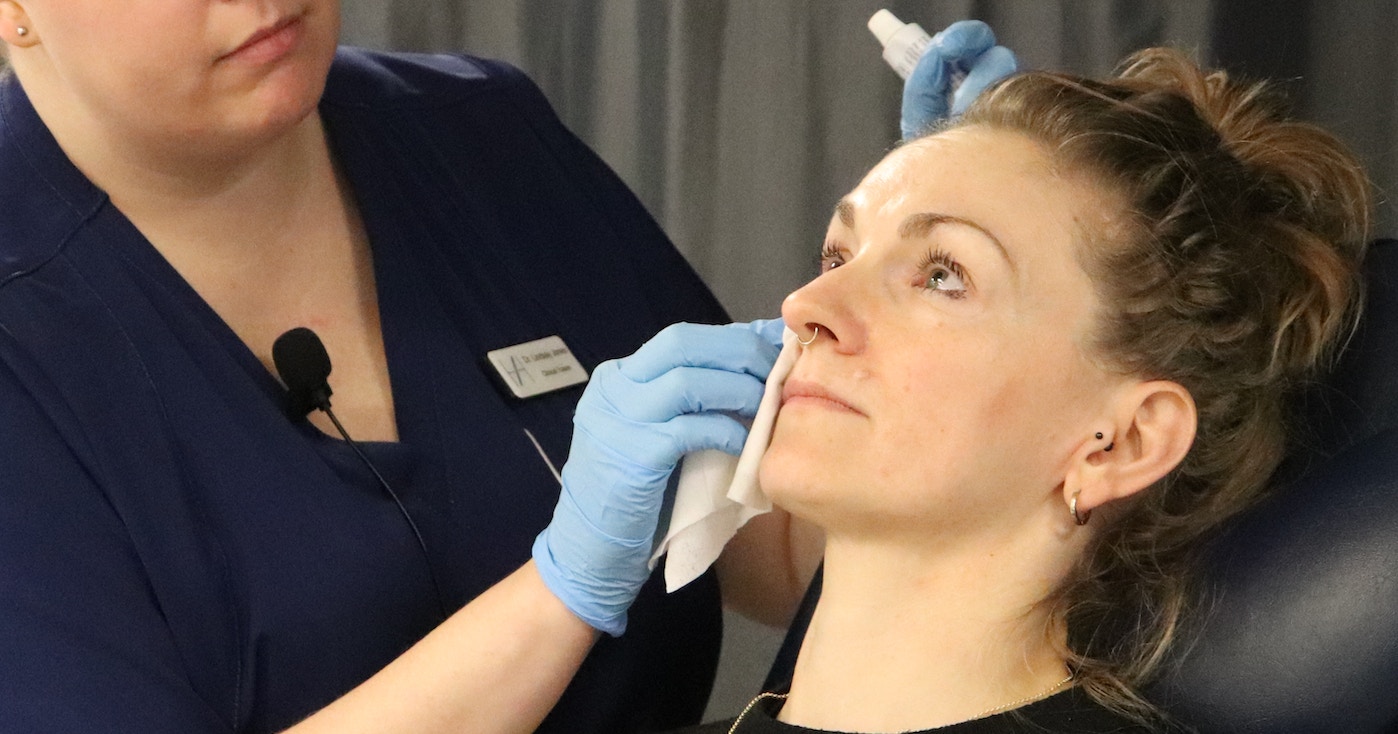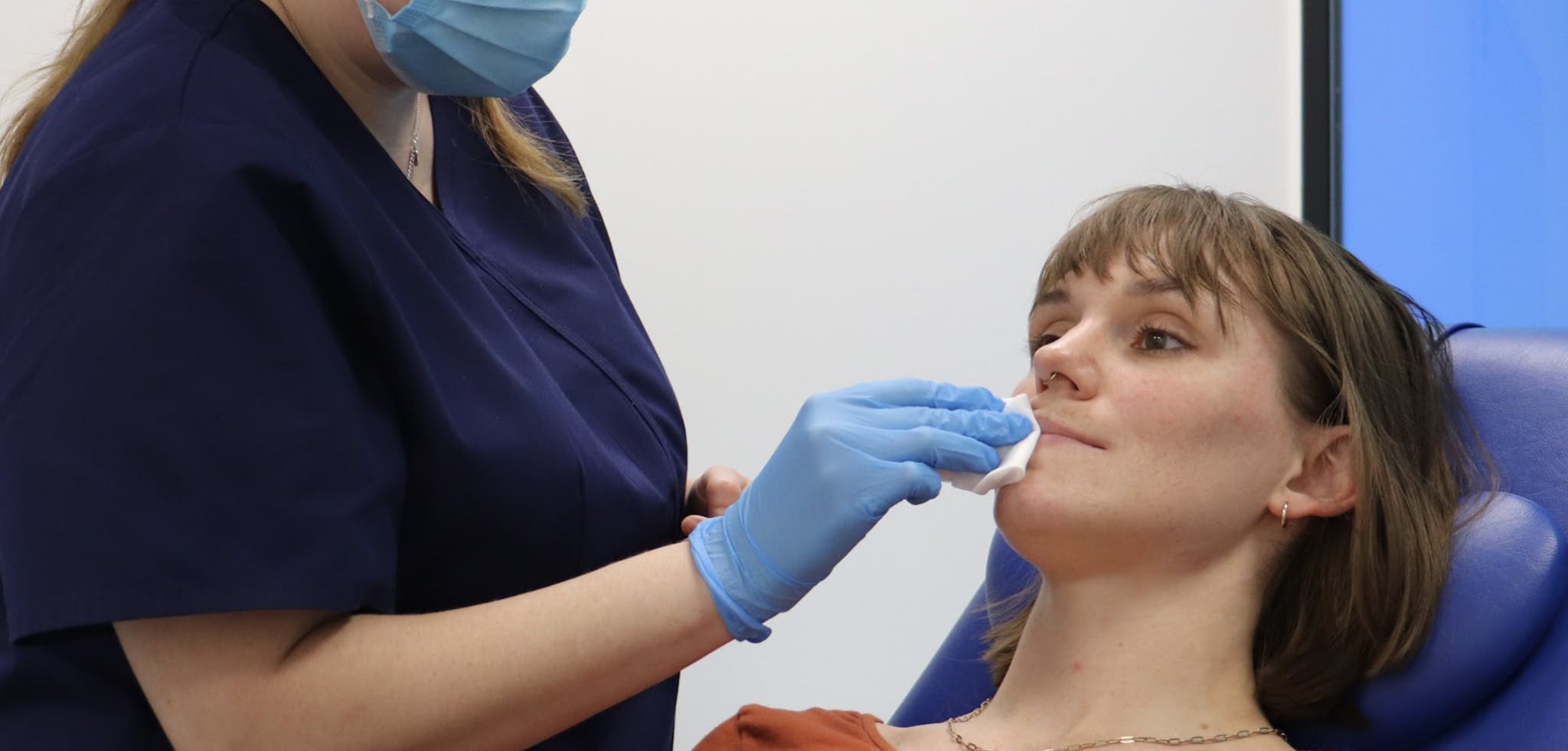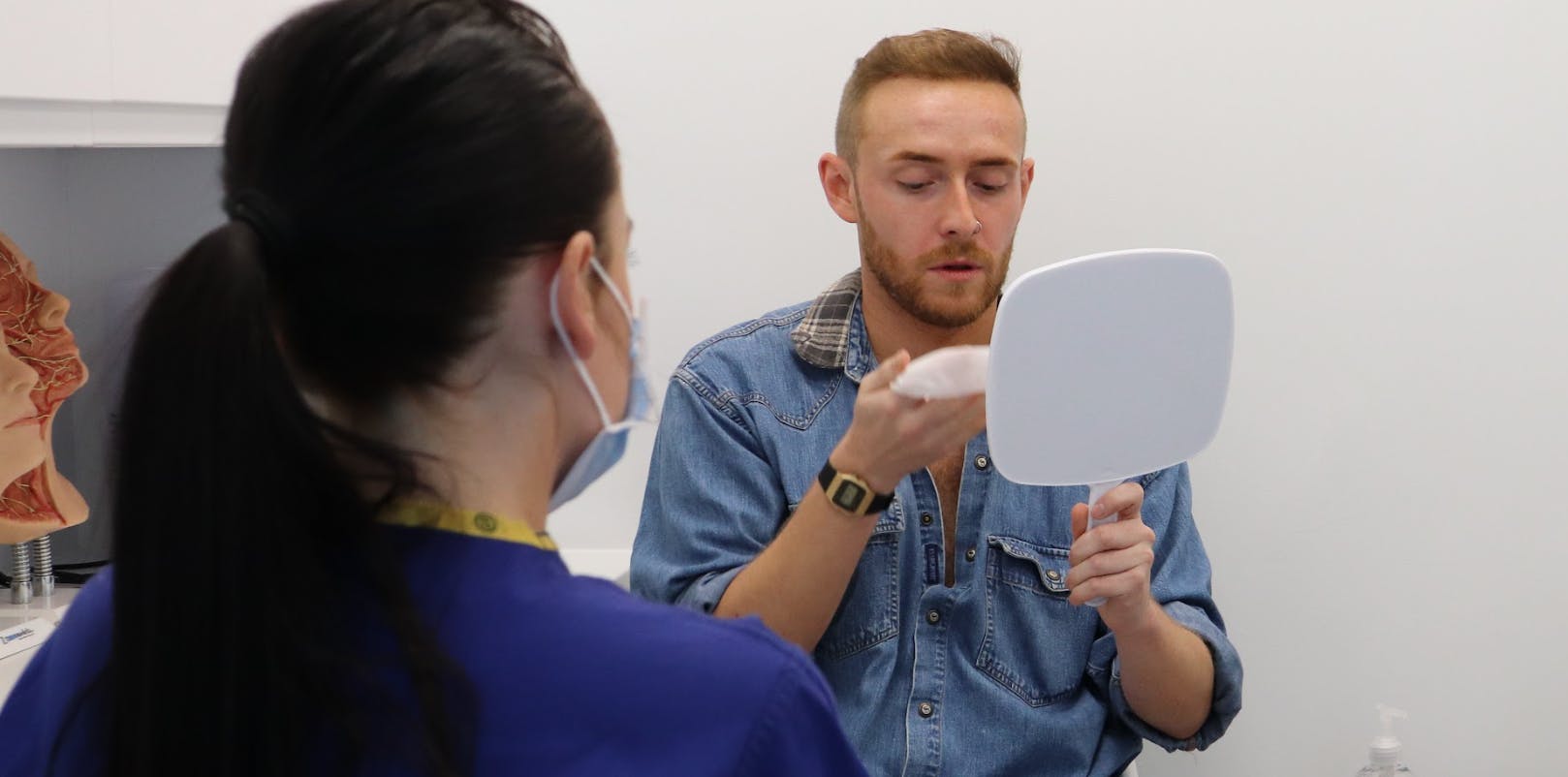How to Clean Aesthetics Patients Faces Properly

It may sound obvious or trivial but a significant number of injectors don’t know how to clean aesthetics patients’ faces properly.
This underrated, vital step in minimising the risk of infection is often overlooked. Remember doing a half-hearted job, rather than giving this critical part of the treatment process due attention, could cause a lot of concern later. Potential issues include infection, abscess and nodules.
So, to start the New Year off, we’re going back to basics. Here we explain why clinically cleaning aesthetics patients’ faces properly is so important, and how to do a thorough job...

WHY YOUR PATIENTS SHOULD HAVE A THOROUGHLY CLEAN FACE PRIOR TO TREATMENT
1. Makeup can harbour all kinds of bacteria. Injecting through make up increases the risk of infection as you transfer this into the injection site of a filler implant. Individual ingredients also vary. These can introduce foreign body material into the skin, setting up inflammatory processes, such as granuloma formation. Another important point here is to never inject through makeup pencil marks you may use to plan treatments. Dipping the pencil in some antiseptic before use and wiping the application end on a sterile gauze helps these pencils clean.
2. Environmental pollution – from exhaust fumes to dust in the air, deposits on skin – change and increase the microbiome on the skin. This can leave the face dirty. As with makeup, injecting through this layer of grime is unsafe as it raises the chance of infection.
3. You want the area you’re injecting to be as clean as possible. By the time the patient has got to you, their face will have been exposed to at least one of the two elements outlined above. Additionally, their skin will have produced oil and sweat which will need removing prior to treatment.

HOW TO CLEAN YOUR PATIENT'S FACE METICULOUSLY
Harley Academy’s director of education, Dr Kalpna Pindolia notes, “Cleaning the face takes longer than the injecting sometimes. Infection prevention is key, especially as modern makeup becomes harder to remove!”
“An extensive clean is required for cannula use in particular,” she advises. “As even an inadvertent touch of the tip on the skin could introduce bacteria under the skin with subsequent use.”
Many of today’s complexion products – including SPF – offer advanced “long wear” formulations designed to stay on the skin for 24 hours. These tend to require an oil-based makeup remover, cleansing balm or a micellar water to loosen them up. Followed by a “second cleanse” with a cleanser that is generally not oil-based, to thoroughly clean the skin.
This method is known as double cleansing and has become hugely popular over the past few years. If you sell skincare products, using this process to prepare skin pre-procedure is a great way of stealthily advertising them to your injectables patients.
The steps you should follow for good skin preparation pre treatment are...
1) Clean your patient’s face using the product(s) of your choice
Many clinicians use makeup removing wipes (preferably biodegradable for the sake of the planet!). Alternatively, you may wish to use a gentle, hydrating wash-off cleanser and some non sterile gauze.
2) You will need a new makeup wipe for each round of cleansing
Don’t be stingy with these. You need to remove every last trace of makeup and dirt to ensure your patient’s face is suitable for treatment.
Remember to pay special attention to any crevices in the areas you’re about to treat. For example, the creases at either side of the nose when preparing to treat the piriform fossa or administer nasolabial fold filler. A good clean around the mouth and hairline areas is also sensible if you will be treating in this region.
3) If there’s any residue left, keep cleansing until wipes come away clean!
Once more for luck: If there’s any residue left, keep cleansing until the wipes come away clean!
4) Clinically cleanse the skin with a disinfecting agent
Then you can go on to clinically cleanse the skin with a disinfecting agent. In clinic at Harley Academy, we tend to use products such as Clinisept. Again, you would expect a visually clean swab post use.
5) Post treatment cleansing
After treatment it’s good practice to clean with a disinfecting agent. However, ensure this does not wipe away any blood clots, as this will cause further bleeding.
Another top tip is to ask your patient to wash their hands, or at least use hand sanitiser, before treatment. This is because they have a habit of touching their face and contaminating the clean field you’ve created!
Remember to use sterile packs to maintain an aseptic, non touch technique throughout filler procedures.

TWO THINGS TO BEAR IN MIND...
When it comes to ensuring you’ve cleaned your aesthetics patients faces properly, bear these points in mind…
If a patient tells you they’ve cleaned their face, always check for yourself that their skin is sufficiently clean. Then clean it again…
Some aesthetics patients may be reluctant to have their makeup removed.
In these situations, use your medical knowledge and common sense to take a view. For instance, if the patient is seeing you for a lip filler treatment, there’s no reason they need to remove their eye makeup.
Secondly, firmly but kindly explain to them the reason makeup removal is required.
Makeup can be a form of armour for some individuals, or an ingrained habit so long standing that they’re not used to being seen without it. As such, never view resistance to removing it as trivial or obstructive; compassion backed with a common sense, medical approach is required.
PERFECTING YOUR APPROACH TO INJECTABLES
At Harley Academy all our aesthetics courses are designed to ensure you understand each step of the injectables appointment process. From consulting your patients, to preparing them mentally and physically for treatment.
We firmly believe in the power of hands-on learning under the guidance of an experienced mentor in a real clinical setting. As such, our industry-leading Level 7 Diploma in Botox & Dermal Fillers course offers regular mentoring sessions as standard.
During this mentoring – which can otherwise be hard to find in the aesthetics industry – you’ll not only absorb your mentors’ insights and instruction. You’ll also be able to ask questions throughout, to really develop and hone your skills in every aspect of patient care and technical injecting.
If you’re a doctor, dentist, nurse, midwife or clinical prescribing pharmacist considering a career in aesthetic medicine, or wanting to obtain a qualification to demonstrate your expertise as an aesthetics practitioner, contact our Courses team now.
They’ll be able to assist you, recommend the best injectables training for you and they can also book you in for our next Aesthetics Careers Open Evening so you can kickstart your career goals!
All information correct at the time of publication
Download our full prospectus
Browse all our injectables, dermal fillers and cosmetic dermatology courses in one document
By submitting this form, you agree to receive marketing about our products, events, promotions and exclusive content. Consent is not a condition of purchase, and no purchase is necessary. Message frequency varies. View our Privacy Policy and Terms & Conditions
Attend our FREE open evening
If you're not sure which course is right for you, let us help
Join us online or in-person at our free open evening to learn more
Our Partners













STAY INFORMED
Sign up to receive industry news, careers advice, special offers and information on Harley Academy courses and services

